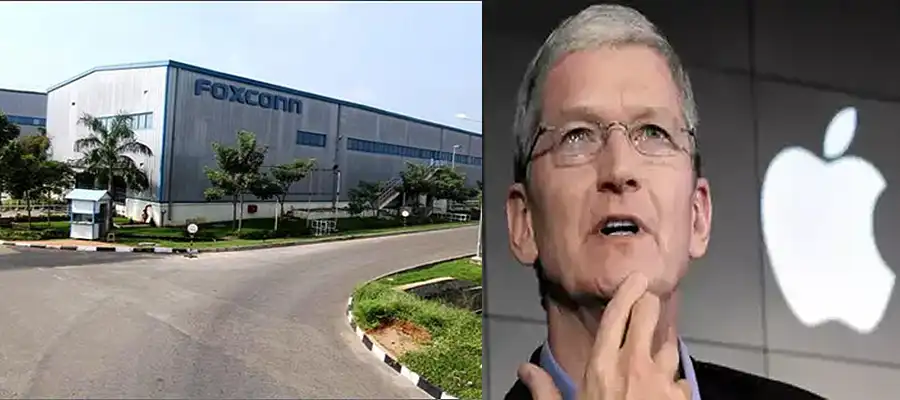Apple employs 60 thousand individuals in India and 300 thousand individuals in China.
Indian and Chinese manufacturers receive a paltry $30 (approximately Rs. 2500) per unit for the iPhone, which is being sold for approximately $1,000 (approximately Rs. 85 thousand) in America. It is less than 3% of the unit cost, but it creates employment.
Approximately 300,000 Chinese and 60,000 Indian employees are employed in these units. This may be the possible reason why Trump wishes Apple to move its manufacturing plant to America.
Production of iPhones rose by 60% from March 24 to March 25.
Apple produced iPhones worth $22 billion (approximately ₹ 1.88 lakh crore) in India between March 2024 and March 2025. There has been a rise of 60% compared to the previous year.
During this time, Apple exported $17.4 billion (approximately ₹1.49 lakh crore) worth of iPhones to other countries from India. Meanwhile, one in every five iPhones in the world is now being produced in India. As for India, iPhones are being produced in factories in Tamil Nadu and Karnataka.
Foxconn makes the most in this. Foxconn is Apple's largest manufacturing partner. Despite this, Tata Electronics and Pegatron also produce the same.
According to expert opinion, Apple will incur economic loss by leaving India
Telecom Equipment Manufacturers Association (TEMA) Chairman NK Goyal informed, "Apple last year had exported iPhones valued at over $22 billion from India. With three plants already up and running and plans to set up two more, the company is obviously serious about its Indian operations." He cautioned that shifting out of India would result in financial losses for Apple. That would be a commercial wrong decision."
Jaideep Ghosh, ex-partner at KPMG, stated, "India manufactured iPhones of the value of Rs 1.75 lakh crore in FY 2025 alone, higher than Rs 1.2 lakh crore for last year. This is a reflection of how critical India stands in Apple's global plan." "Making iPhone production in the US is not an easy feat. Cost of labor alone will significantly raise the cost of production," Ghosh added.
Prashant Girbane, Director General at Maharatta Chamber of Commerce, Industries and Agriculture (MCCIA), stated Apple's move to raise production in India was a tactical move to reduce its supply chain dependence on China and not to take investment away from the US. He explained, "Right now, 80% of Apple's production happens in China. Moving some part of it to India will make the supply chain more robust and take away dependence on a geopolitical partner."
Even though the CEO of Apple, Tim Cook, hasn't made any positive statement towards the manufacturing relocation from India and China to the US. In spite of crystal clear political lines drawn to him, he doesn't have any reception to this idea. Still Cook had intended to instead scale the operations in India to a further level. But amidst the political intervention, what will be the future? will Apple opt for the homecoming from Chennai to Cupertino? This is yet to be seen.
